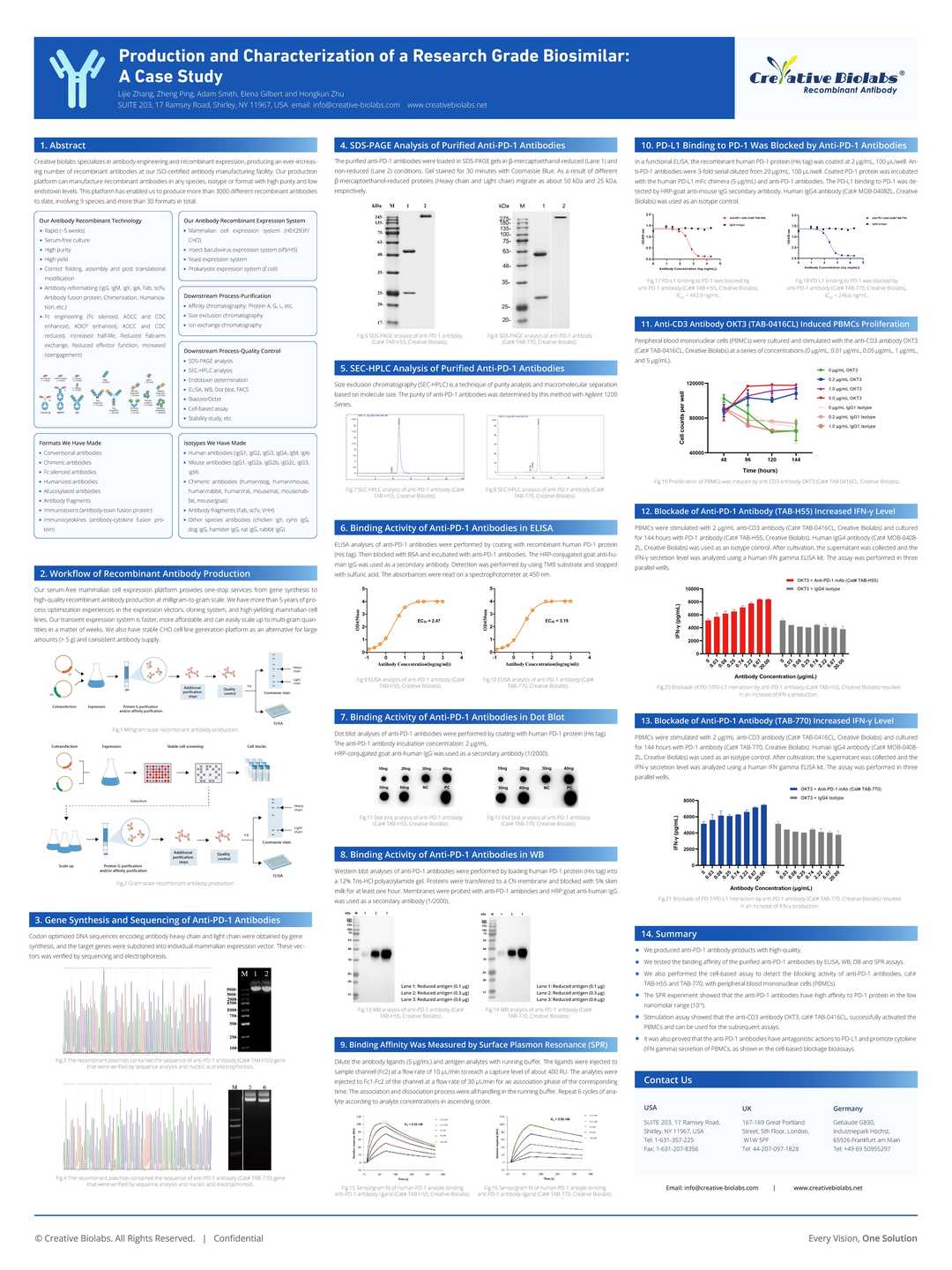Recombinant Mouse Anti-HLA-DPA1 Antibody (clone 2B1A10)
CAT#: VS3-FY678
This product is a recombinant mouse antibody that recognizes HLA-DPA1. This antibody has been reported for use in Enzyme-linked Immunosorbent Assay, Western Blot, Immunohistochemistry, Flow Cytometry. The clone 2B1A10 is specific for HLA-DPA1.





Specifications
- Host Species
- Mouse
- Type
- Mouse IgG2a
- Clone
- 2B1A10
- Applications
- Enzyme-linked Immunosorbent Assay, Western Blot, Immunohistochemistry, Flow Cytometry
- Conjugate
- Unconjugated
Product Property
- Purity
- >95% as determined by SDS-PAGE
- Storage
- Centrifuge briefly prior to opening vial. Store at +4°C short term (1-2 weeks). Aliquot and store at -20°C long term. Avoid repeated freeze/thaw cycles.
Applications
- Application Notes
- This antibody has been reported for use in Enzyme-linked Immunosorbent Assay, Western Blot, Immunohistochemistry, Flow Cytometry.
Target
- Alternative Names
- Major Histocompatibility Complex, Class II, DP Alpha 1; MHC Class II DP3-Alpha; HLA-SB Alpha Chain; HLA-DP1A; DP(W3); DP(W4); HLASB
- Gene ID
- 3113
- UniProt ID
- P20036
- Sequence Similarities
- Belongs to the MHC class II family.
- Cellular Localization
- Cell membrane, Endoplasmic reticulum, Endosome, Golgi apparatus, Lysosome, Membrane, MHC II
- Protein Refseq
- NP_001229453.1; NP_001229454.1; NP_291032.2
- Function
- Binds peptides derived from antigens that access the endocytic route of antigen presenting cells (APC) and presents them on the cell surface for recognition by the CD4 T-cells. The peptide binding cleft accommodates peptides of 10-30 residues. The peptides presented by MHC class II molecules are generated mostly by degradation of proteins that access the endocytic route, where they are processed by lysosomal proteases and other hydrolases. Exogenous antigens that have been endocytosed by the APC are thus readily available for presentation via MHC II molecules, and for this reason this antigen presentation pathway is usually referred to as exogenous. As membrane proteins on their way to degradation in lysosomes as part of their normal turn-over are also contained in the endosomal/lysosomal compartments, exogenous antigens must compete with those derived from endogenous components. Autophagy is also a source of endogenous peptides, autophagosomes constitutively fuse with MHC class II loading compartments. In addition to APCs, other cells of the gastrointestinal tract, such as epithelial cells, express MHC class II molecules and CD74 and act as APCs, which is an unusual trait of the GI tract. To produce a MHC class II molecule that presents an antigen, three MHC class II molecules (heterodimers of an alpha and a beta chain) associate with a CD74 trimer in the ER to form a heterononamer. Soon after the entry of this complex into the endosomal/lysosomal system where antigen processing occurs, CD74 undergoes a sequential degradation by various proteases, including CTSS and CTSL, leaving a small fragment termed CLIP (class-II-associated invariant chain peptide). The removal of CLIP is facilitated by HLA-DM via direct binding to the alpha-beta-CLIP complex so that CLIP is released. HLA-DM stabilizes MHC class II molecules until primary high affinity antigenic peptides are bound. The MHC II molecule bound to a peptide is then transported to the cell membrane surface. In B-cells, the interaction between HLA-DM and MHC class II molecules is regulated by HLA-DO. Primary dendritic cells (DCs) also to express HLA-DO. Lysosomal microenvironment has been implicated in the regulation of antigen loading into MHC II molecules, increased acidification produces increased proteolysis and efficient peptide loading.
Customer Review
There are currently no Customer reviews or questions for VS3-FY678. Click the button above to contact us or submit your feedback about this product.
Submit Your Publication
Published with our product? Submit your paper and receive a 10% discount on your next order! Share your research to earn exclusive rewards.
Downloadable Resources
Download resources about recombinant antibody development and antibody engineering to boost your research.
Product Notes
This is a product of Creative Biolabs' Hi-Affi™ recombinant antibody portfolio, which has several benefits including:
• Increased sensitivity
• Confirmed specificity
• High repeatability
• Excellent batch-to-batch consistency
• Sustainable supply
• Animal-free production
See more details about Hi-Affi™ recombinant antibody benefits.
Datasheet
MSDS
COA
Certificate of Analysis LookupTo download a Certificate of Analysis, please enter a lot number in the search box below. Note: Certificate of Analysis not available for kit components.
Protocol & Troubleshooting
We have outlined the assay protocols, covering reagents, solutions, procedures, and troubleshooting tips for common issues in order to better assist clients in conducting experiments with our products. View the full list of Protocol & Troubleshooting.
Secondary Antibody
- CAT
- Product Name
Isotype Control
- CAT
- Product Name
See other products for "HLA-DPA1"
Select a product category from the dropdown menu below to view related products.
| CAT | Product Name | Application | Type |
|---|---|---|---|
| MOB-1980z | Mouse Anti-HLA-DPA1 Recombinant Antibody (clone 3F10) | ELISA, WB | Mouse IgG2a, κ |
| MOB-0049MZ | Recombinant Mouse Anti-Human HLA, Class II antigen-DR+DP Antibody (clone A237-14241) | FC, IP | Mouse antibody |
| VS3-CJ760 | Mouse Anti-HLA-DPA1 Recombinant Antibody (clone B7/21) | IF, FC | Mouse IgG1, κ |
| VS3-FY679 | Recombinant Mouse Anti-HLA-DPA1 Antibody (clone 6C3D8) | ELISA, IHC, FC | Mouse IgG2b |
| VS13-YC532 | Rabbit Anti-HLA-DPA1 Recombinant Antibody (VS13-YC532) | IHC-P | Rabbit IgG |
| CAT | Product Name | Application | Type |
|---|---|---|---|
| VS-0525-XY3171 | Anti-HLA-DPA1 Immunohistochemistry Kit | IHC |
Popular Products

Application: FC, Cyt, Stim, PP, Agonist

Application: ELISA, FC, IP, FuncS, IF, Neut, ICC

Application: WB, IF, IP, Neut, FuncS, ELISA, FC

Application: ELISA, FC, IP, FuncS, IF, Neut, ICC

Application: ELISA, FC

Application: Neut, FC

Application: ELISA, Cyt, PP, Inhib

Application: ELISA, Activ, Block
For research use only. Not intended for any clinical use. No products from Creative Biolabs may be resold, modified for resale or used to manufacture commercial products without prior written approval from Creative Biolabs.
This site is protected by reCAPTCHA and the Google Privacy Policy and Terms of Service apply.
















-3.jpg)







